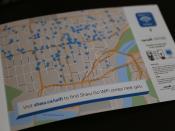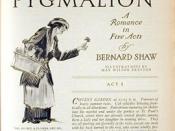The content present in Shaw's "Pygmalion", thoroughly reflects the aspects of Edwardian England. Shaw made this issue one of the themes of his play and unveiled the "markers" people of the time used to judge and evaluate one another. Shaw utilizes several examples of class system, gender roles, education and religion to reflect the attitudes and values of people during the particular era.
The class system in Edwardian England had clearly established distinctions where those higher up in the socio-economic ladder spoke better English, 'genteel English' as Eliza Doolittle puts it, and those from the lower classes spoke a hotchpotch of English dialects according to their origins.
The gender roles present in this text and in Edwardian England reveal the male dominance over females. The patriarchal society existent at the time in which the novel was set in, and the male dominance in novel compliment each other. Women were barely educated, as only men were seen as 'fit to learn'.
As a result, men were viewed as the more superior sex. They were seen as the ultimate providers of the family as a whole, despite the fact that most family members worked in one way or another to help diminish financial and domestic stress.
In addition, education was also a distinct marker between the social classes that exist in Pygmalion. We see that Freddy Eynsford-Hill has the ability to read and write, something which Eliza cannot do. It is evident through Eliza's use of slang language at the beginning of the play that she is uneducated and hence a member of lower class society. It was believed that those from the lower class with no education had no hope for the future due to their lack of knowledge and etiquette.
Etiquette had a large impact on defining class structure.


